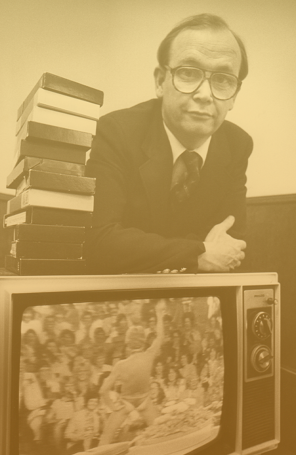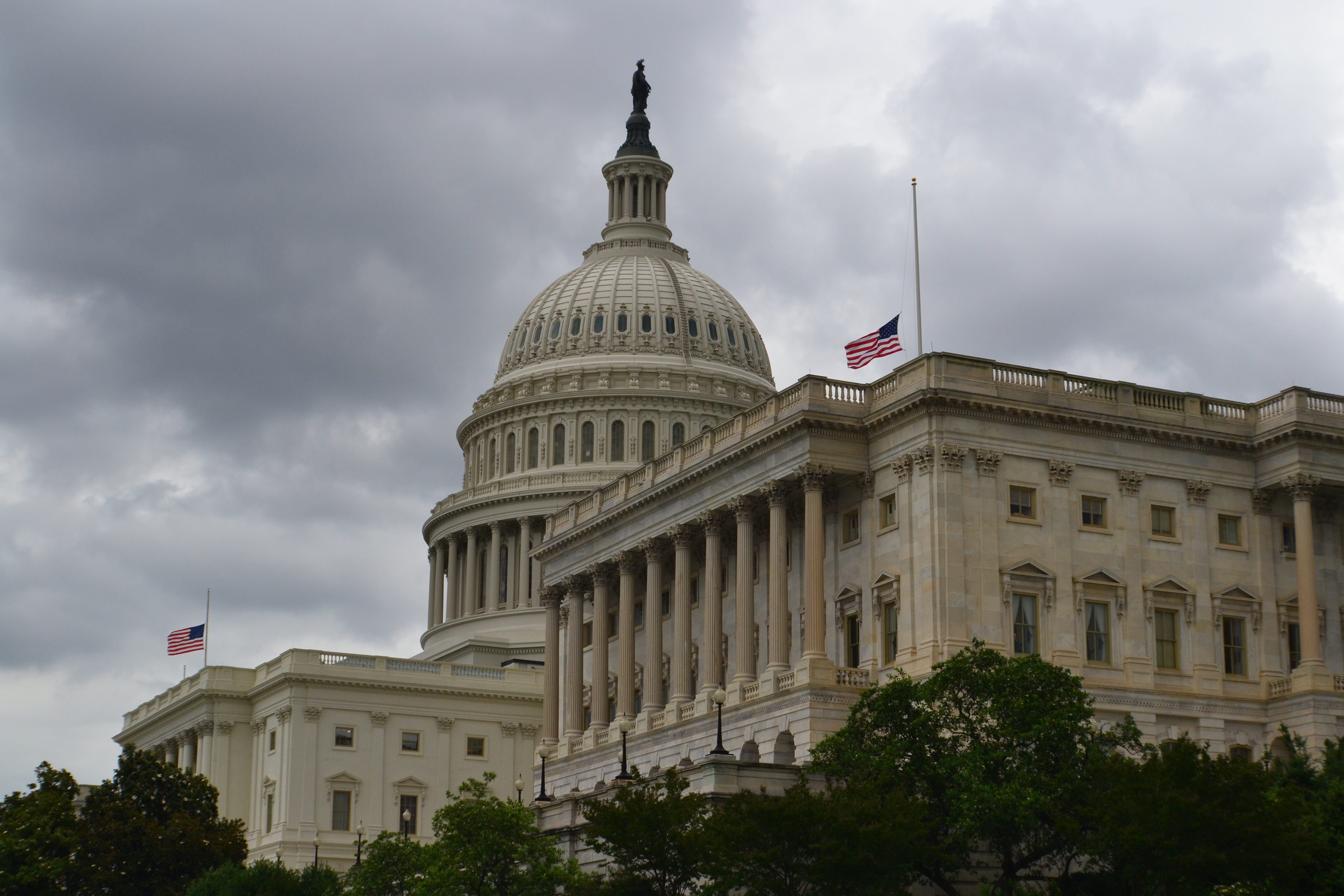The day Sears listened
 Read To Me
Read To Me
Sign up for a six month free
trial of The Stand Magazine!
The glass-and-steel tower seemed to rise forever. In the plaza along Jackson Boulevard and Wacker Drive, 30 protestors gathered with picket signs, dwarfed by the tallest building in the world: the Sears Tower.
On this unusually humid Chicago morning,
protestors stood not just in shadow, but in disappointment, believing that Sears – that great American institution – had betrayed them. The homemade signs all had a simple but clear message: “Boycott Sears.”
The picket received a mix of cheers, jeers, and indifference from the bustling city life that Friday morning. Led by the Rev. Donald Wildmon, the protesters didn’t yet realize the ripple their presence was causing in the 40th-floor executive suites. Just before noon, as office workers spilled out onto the sidewalk to find lunch, a newspaper reporter approached Don.
“Have you heard?” the reporter asked, somewhat excited. “Sears just announced that they are pulling their ads from Three’s Company and Charlie’s Angels because the shows don’t conform to their advertising guidelines. Your comments, please?”
Don stood a bit staggered. Unsure of how his April meeting with Sears brass had turned out, he was floored to learn that they had actually taken him seriously. But how on earth did the National Federation for Decency (NFD) ever come to impact the largest retailer in the country?
A data-backed boycott
The Sears boycott began to take shape in the early months of 1978. After a 15-week television-monitoring project completed in December of 1977, the NFD had collected data on 864.5 hours of prime-time content. Sexualized shows, themes, jokes – even commercials – had all been catalogued. Don crunched the numbers, and the results were staggering.
ABC led the networks with 1,109 incidents of sexual content. CBS followed with 777, and NBC trailed with 547. The filthy soap-opera spoof, Soap, single-handedly accounted for 324 sexual comments or scenes in its first 12 episodes. (See The Stand, 10/25, 11/25.) Three’s Company, the runner-up, had 130.
According to NFD’s monitoring report, prime-time television was averaging 2.81 sexual incidents per hour. At that rate, a viewer who watched only prime-time TV for a full year would be exposed to 9,230 sexual incidents. Furthermore, 89% of all sex on TV was depicted outside of the marriage covenant.
The report also identified the top three sponsors of profanity and sexual content on prime time: 1) American Home Products, 2) Ford Motor Company, and 3) Sears, Roebuck and Company.
Don was shocked. Sears had not even sponsored Soap, so its presence on the list came as a stunner. The company – famous for its mail-order catalogues and growing array of dependable brands such as Craftsman tools, Kenmore appliances, and Allstate insurance – had come to epitomize traditional American values.
“Yet in 1977,” Don lamented in his book The Man the Networks Love to Hate, “the world’s largest retailer had become one of the biggest promoters of adultery, distorted and exploitative sex, violence, and profanity.”
Letters of concern to Sears executives went nowhere. Don had the numbers right in front of him, and they didn’t square with Sears’ public relations platitudes of “responsibility” and “high standards.” He saw no other alternative but to call for a boycott.
On March 3, 1978, Don announced the boycott of Sears, Roebuck and Company. In a letter to Sears CEO Arthur Wood, Don expressed disappointment that the situation had reached this point.
“Sears’ ostensibly wholesome advertising policy and its actual advertising practices simply do not match up,” he wrote. “And as long as Sears continues its present practice of promoting violence, sex, and profanity, it doesn’t warrant the business of Americans concerned about television’s deleterious impact.”
Despite the announcement, Sears offered no direct response. Instead, executives contacted the local Sears store in Tupelo, Mississippi – where the NFD was headquartered – hoping to learn something about “this Don Wildmon fella,” but discovered little beyond the fact that he held a Sears charge card.
Advertising Age published a quote from a Sears official who dismissed the NFD’s complaints. When Don read the quote, he ramped up the pressure even more. Pickets would be planned in front of Sears stores nationwide as well as the Sears Tower in Chicago.
A sought-after meeting
Finally, Don got a phone call.
Sears officials were coming to Tupelo for a meeting with the NFD. Choosing not to host the meeting in his makeshift office – the dining room of the Wildmons’ three-bedroom house – and unable to afford a room at the Holiday Inn, Don arranged to use the pastor’s office at Lee Acres Methodist Church.
Representing Sears were Donald Deutsch, vice president of public affairs, and Kelly Seaton, senior account executive with ad agency Ogilvy-Mather. Don was joined by NFD board members Allen Wildmon, Annette Hall, and the Rev. Crawford Ray.
Deutsch was smooth and articulate, presenting Sears as a family-oriented company and highlighting the Sears-Roebuck Foundation’s generous support of family-friendly programs such as Mister Rogers’ Neighborhood.
Seaton was well-prepared with charts and graphs, illustrating how Sears prioritized ads on shows with family appeal. She even showed how the company had scaled back advertising on violent shows such as Starsky & Hutch and Kojak.
Don was impressed but not persuaded.
He made a firm appeal on behalf of the millions of Americans who were offended by what prime time had become.
“The only avenue we have open to be heard is with advertisers,” Don explained. “Sears spent $82 million on network advertising last year. Sears has some voice with the networks. We don’t. But we do have a voice with Sears.”
While the meeting had been productive, Sears gave no commitment to change their ad policy or practices. Therefore, the NFD felt that it must continue its boycott and storefront protests.
A perfectly timed campaign
As Don stood in front of the Sears Tower with the reporter in his face, he realized the timing of the whole multi-faceted campaign couldn’t have been more perfect. Sears’ updated advertising stance was circulated via newswire throughout the day. Meanwhile – from White Plains, New York, to Portland, Oregon – the protests were detailed by local newspapers. Critics of the NFD reeled in frustration.
“The small number of federation supporters couldn’t possibly put a dent in Sears’ overall revenue,” said an aggravated Ken Burrows in The Idaho Statesman. “It is difficult to fathom how an eccentric David slew the commercial Goliath.”
But David had taken down Goliath, and for Goliath’s part, he wasn’t just play-acting. There was no ambiguity: Sears had changed.
“We feel our participation should be in shows that can be viewed by the entire family,” said Sears’ assistant national news director.
Beyond the updated advertising policy, in the weeks following the protests, Sears’ CEO called a meeting of TV’s top advertisers – the first meeting of its kind in history – to discuss how to help move TV in a more wholesome direction.
This victory – even more than “Turn the Television Off Week” or the Campbell’s Soup boycott – was a confirmation of Don’s calling.
“We have by no means won the war,” Don wrote in June’s NFD newsletter, “but we have at least won a victory. And a major victory at that.”
Don Wildmon had built something that could not be contained and was only just beginning. The country would never be the same.

Sign up for a free six-month trial of
The Stand Magazine!
Sign up for free to receive notable blogs delivered to your email weekly.















